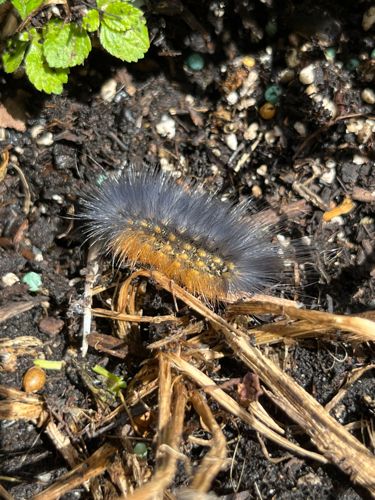Woolly Bear Caterpillar (Isabella Tiger Moth larva)
Scientific Name: Pyrrharctia isabella
Order & Family: Order: Lepidoptera, Family: Erebidae (formerly Arctiidae)
Size: Caterpillars typically range from 1 to 2 inches (2.5 to 5 cm) in length.

Natural Habitat
Woolly bear caterpillars are commonly found in gardens, fields, meadows, forests, roadsides, and disturbed areas across North America, Mexico, and parts of Europe. They prefer temperate climates.
Diet & Feeding
Woolly bear caterpillars are polyphagous, meaning they feed on a wide variety of low-growing plants, including grasses, dandelions, clover, sunflowers, aster, and other herbaceous vegetation. They are not typically destructive to cultivated crops.
Behavior Patterns
Woolly bear caterpillars are known for their distinctive "woolly" appearance due to dense bristles. When disturbed, they often curl into a tight ball, playing dead as a defense mechanism. They are generally solitary as caterpillars. The adult moths are nocturnal. One of the common misconceptions about woolly bears is that the width of the black bands on their bodies can predict the severity of the coming winter; however, this is a myth, and band variations are largely due to the caterpillar's age, dietary history, and environmental conditions during development.
Risks & Benefits
Risks: The bristles on woolly bear caterpillars, while not typically venomous, can cause mild skin irritation or allergic reactions in some sensitive individuals if handled frequently or roughly. Benefits: As caterpillars, they are part of the food chain, serving as a food source for birds, small mammals, and predatory insects. As adult moths, they can contribute to pollination, though they are not considered significant pollinators.
Identified on: 8/27/2025